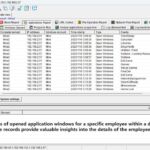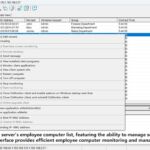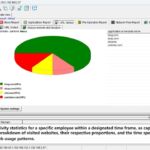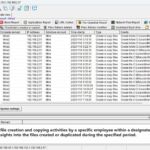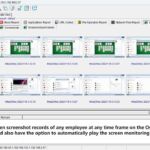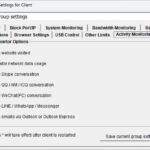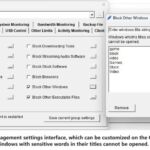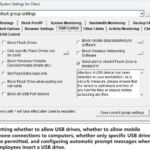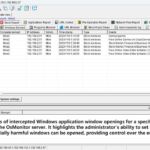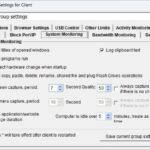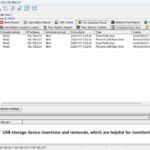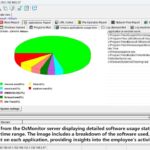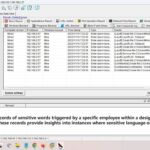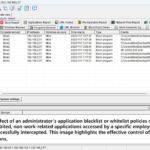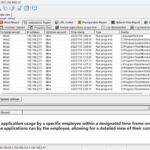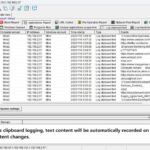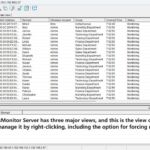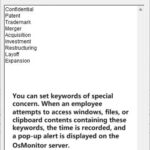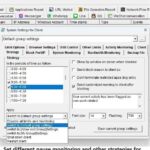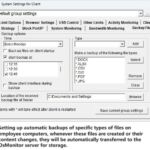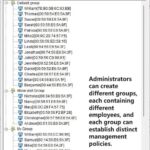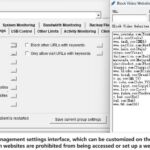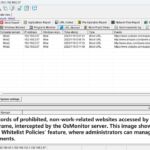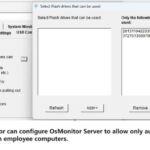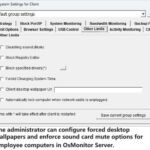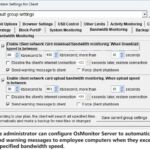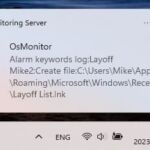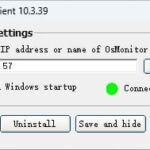Filtering algorithms are essential technologies in computer monitoring software. Their task is to process monitoring data, remove annoying noise and irrelevant information, and enhance the quality and accuracy of the data. For computer monitoring software, the performance analysis and optimization of filtering algorithms are crucial as they are the key to making the software run faster and more reliably. Below, we introduce the relevant methods for performance analysis and optimization:
Performance Analysis of Filtering Algorithms in Computer Monitoring Software:
- Real-time Performance: Filtering algorithms need to work in real-time monitoring scenarios, so performance evaluation includes algorithm computational complexity and response time. For high-frequency data streams, it is crucial to ensure that the filtering algorithms can process and output results promptly to achieve real-time monitoring effectiveness. When designing filtering algorithms, it is essential to consider the algorithm's time complexity and improve response speed through algorithm design and optimization.
- Accuracy: The accuracy of filtering algorithms is critical for the correctness and reliability of monitoring data. Evaluating the algorithm's performance on different monitoring datasets includes its ability to handle noise, outliers, and sudden events. For critical data monitoring, various filtering algorithms can be compared to select the one best suited for specific scenarios. Introducing appropriate mathematical models and statistical methods can better evaluate the accuracy of filtering algorithms.
- Noise Suppression: Computer monitoring data may contain noise, such as sampling errors and sensor drift. Filtering algorithms should effectively suppress this noise to avoid false positives and false negatives. In the design of filtering algorithms, techniques like sliding windows, smoothing, and weighted averaging can be used to reduce the impact of noise and improve data quality.
Optimization Methods for Filtering Algorithms in Computer Monitoring Software:
- Choose Appropriate Filtering Algorithms: Select filtering algorithms based on the characteristics and requirements of monitoring data. Common filtering algorithms include mean filtering, median filtering, Kalman filtering, etc., each with its advantages and suitable scenarios. In practical applications, choose the most appropriate algorithm based on the characteristics of monitoring data and validate its performance through experiments.
- Parameter Tuning: Filtering algorithms usually have parameters that need to be adjusted, such as filtering window size, weight coefficients, etc. Optimize these parameters through experimentation and validation to achieve the best performance of filtering algorithms in specific scenarios. Use techniques like cross-validation to adjust parameters to ensure generalization on unknown datasets.
- Parallelization and Acceleration: For high-frequency data streams, consider using parallel computing and hardware acceleration techniques to improve the processing speed of filtering algorithms. Parallelization can take advantage of multi-core processors to enhance the algorithm's concurrent processing capabilities, thereby speeding up the filtering calculation process.
- Adaptive Filtering: Some filtering algorithms have adaptive capabilities, allowing them to dynamically adjust filtering strategies based on data variations. Leveraging these algorithms can better adapt to different monitoring scenarios and data types. Adaptive filtering algorithms can automatically adjust filtering parameters based on real-time monitoring data characteristics, enhancing the adaptability and performance of filtering algorithms.
- Anomaly Detection: Filtering algorithms can also assist in anomaly detection. By combining the filtered data with anomaly detection algorithms, the performance of monitoring software can be further improved, reducing false alarms and missed detections. Anomaly detection algorithms can identify exceptional data points that have not been processed by filtering algorithms, providing more comprehensive monitoring and alerting functionality.
Filtering algorithms play an absolutely vital role in computer monitoring software, acting as software magicians that continuously progress and innovate in this field, making monitoring data more reliable and trustworthy. We must believe that they will continue to play a crucial role in improving the efficiency and credibility of monitoring data processing!
About OsMonitor:
The mission of OsMonitor is to create a Windows computer system tailored for work purposes, effectively regulating employee computer behavior. It enables employers to understand what employees are doing each day, monitoring every action, including screen activity and internet usage. Additionally, it restricts employees from engaging in specific activities such as online shopping, gaming, and the use of USB drives.
OsMonitor, designed purely as software, is remarkably user-friendly and requires no additional hardware modifications. A single management machine can oversee all employee computers. As a leading brand in employee computer monitoring software with over a decade of successful operation, OsMonitor has rapidly captured the global market with its minimal file size and excellent cost-effectiveness compared to similar software. At this moment, thousands of business computers worldwide are running OsMonitor daily.




